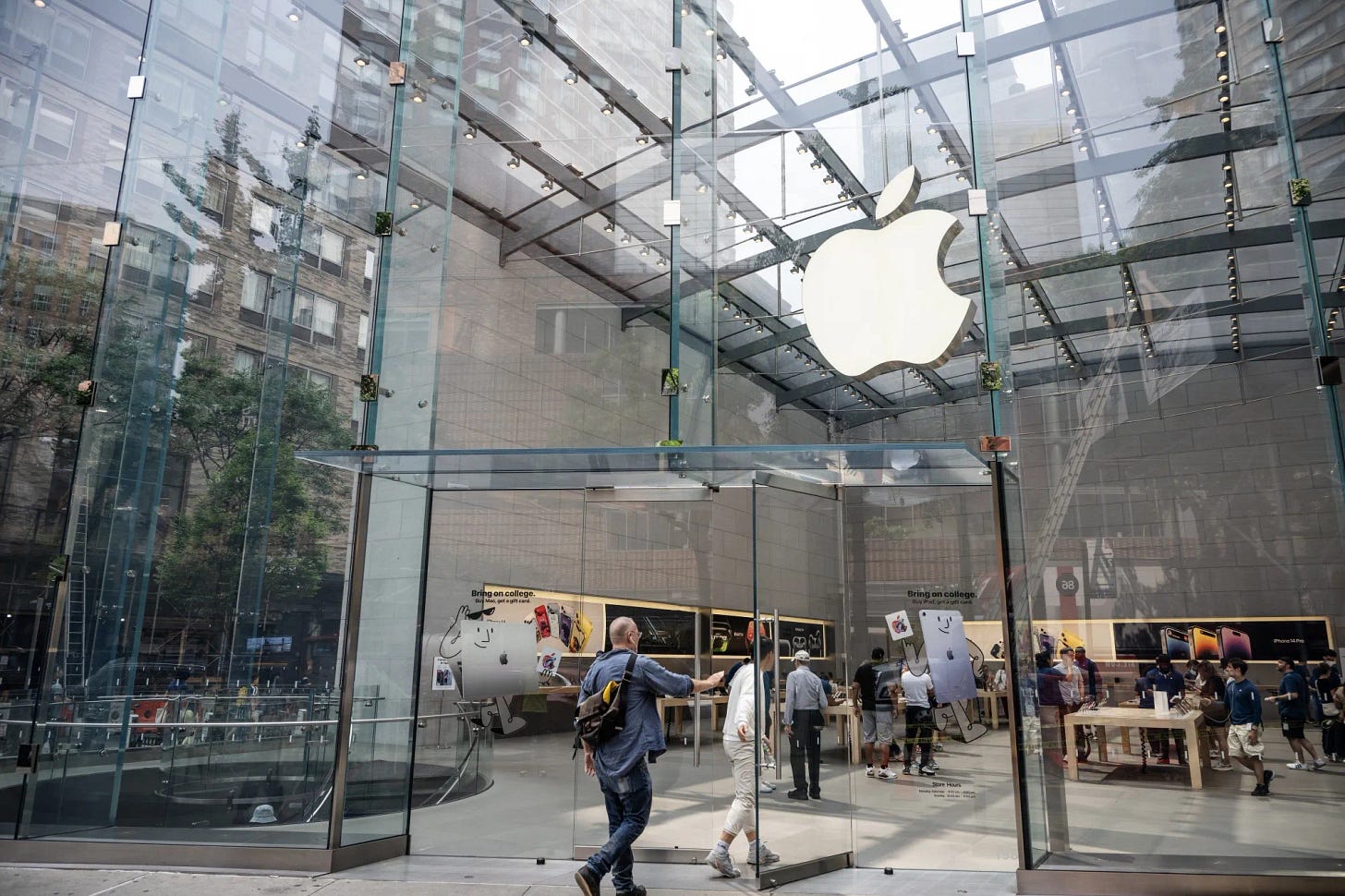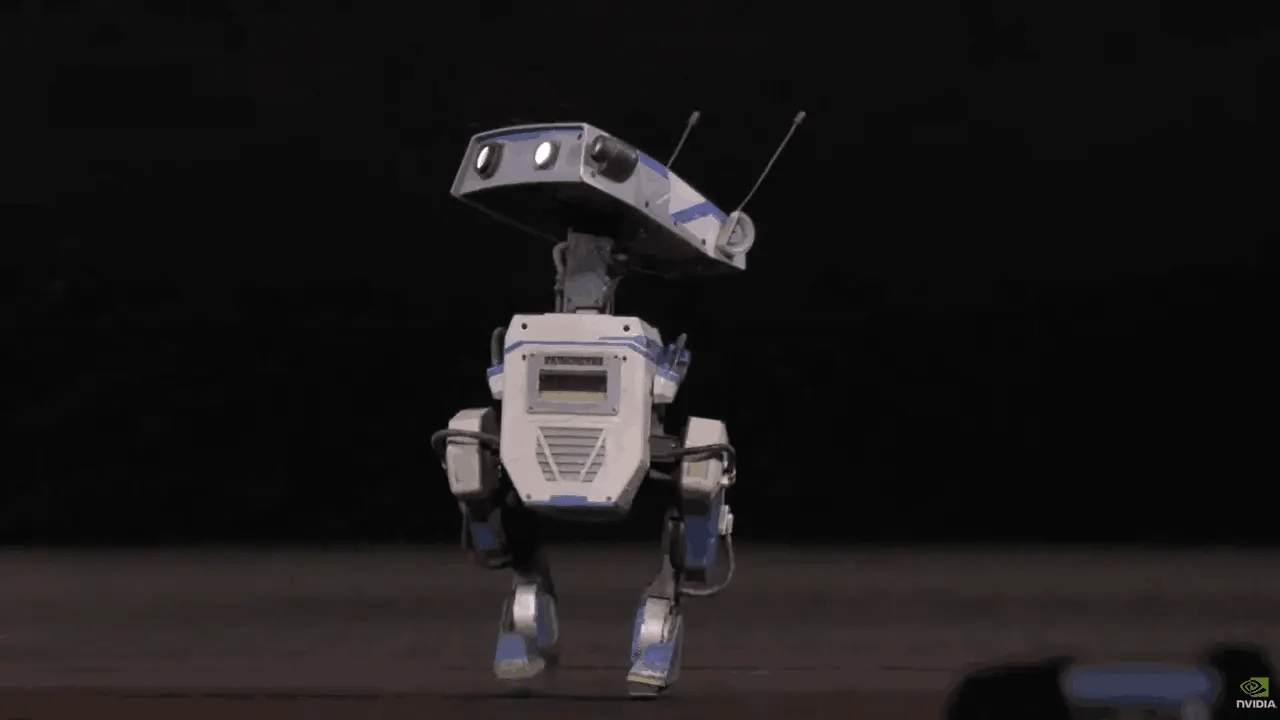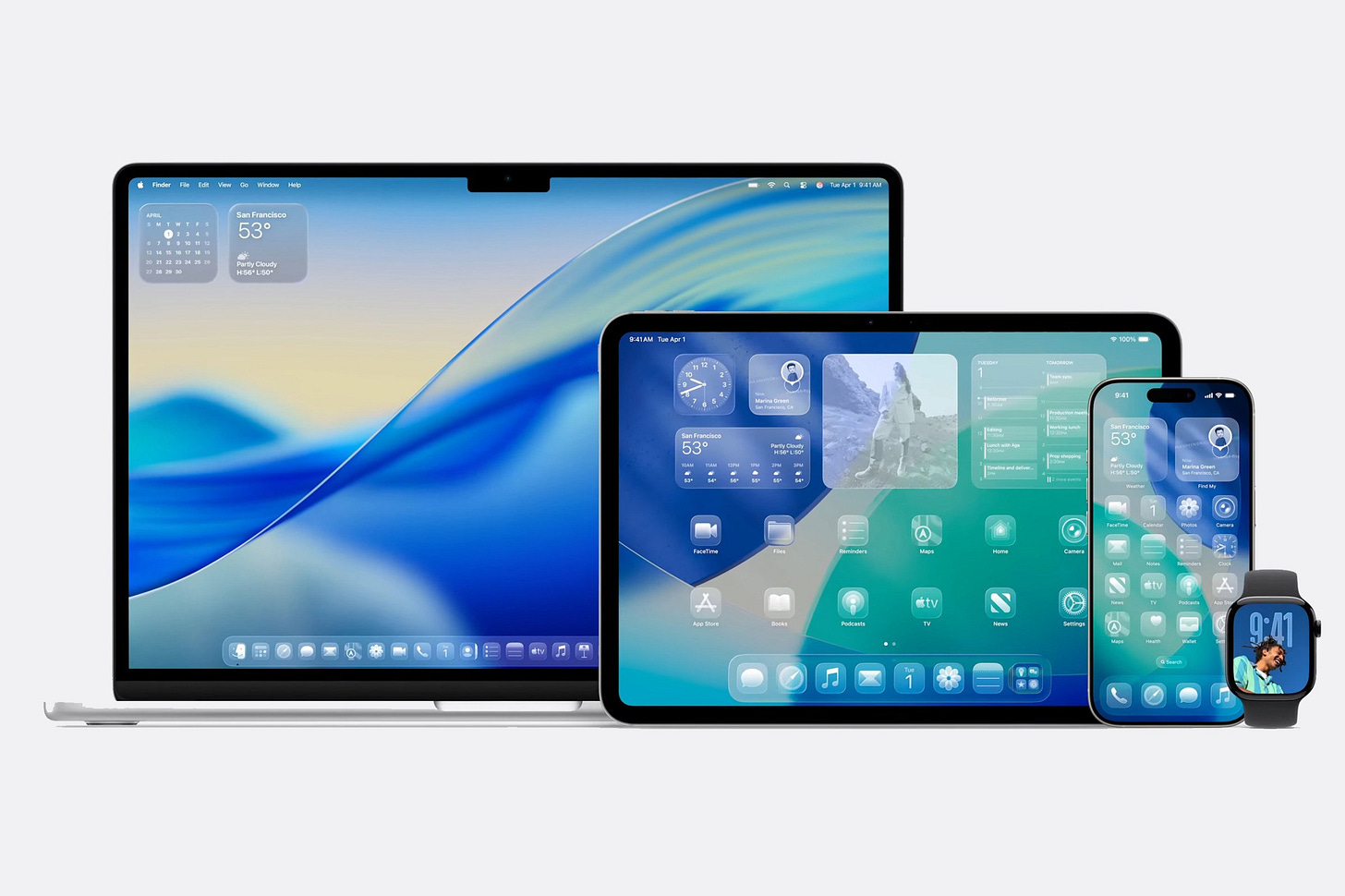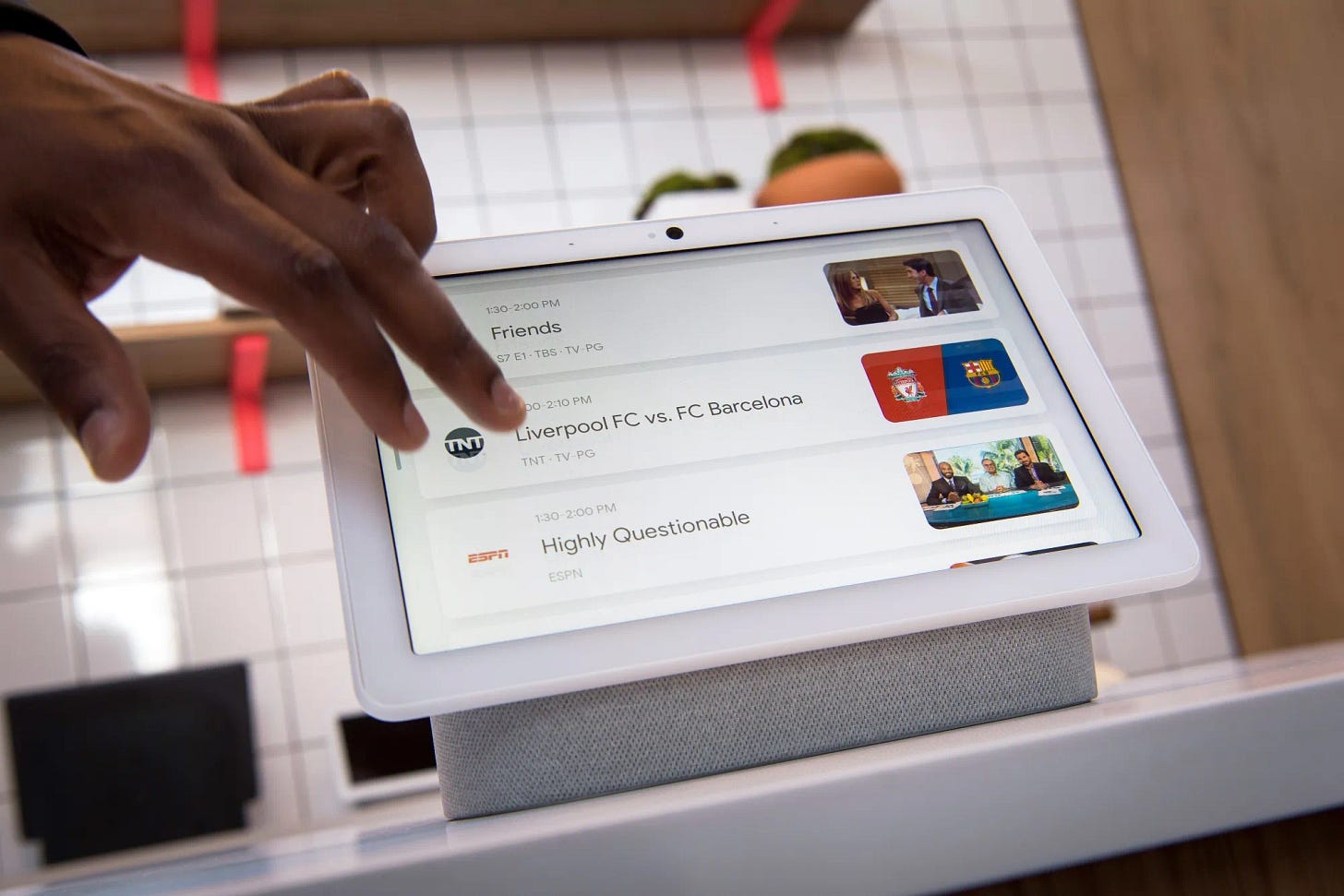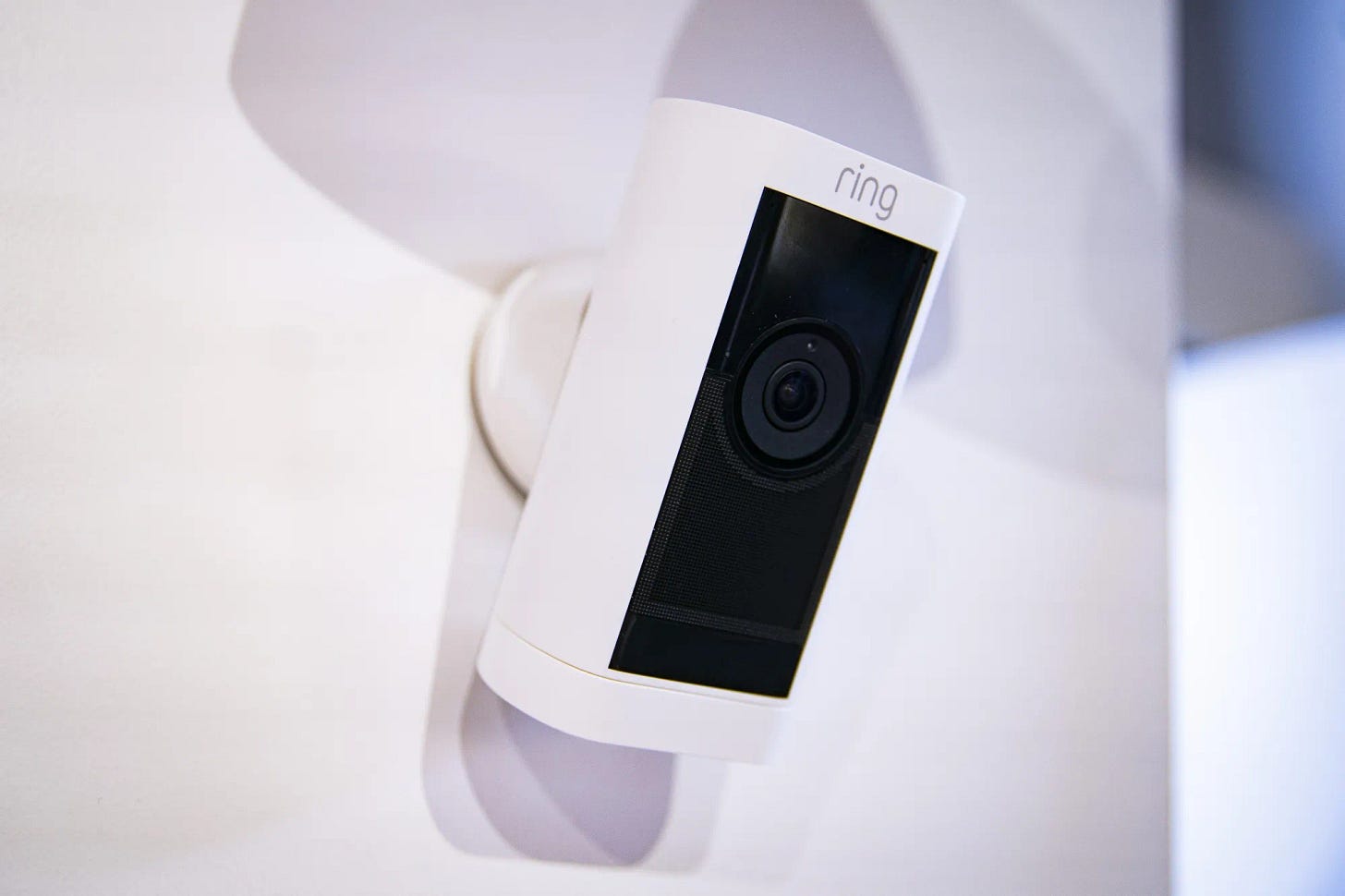AI: Apple's emerging AI hardware roadmap. RTZ #814.
...a multi-platform strategy for developers to build upon
Apple has an emerging AI hardware strategy that may be at least as interesting as the one hinted at by the $6.5 billion acquisition by OpenAI recently, of former Apple uber-design chief Jony Ive. This is in addition to what we know Apple’s building already.
Devices from these efforts won’t be available at scale until next year at the earliest, but these and other efforts hint at cool AI hardware ahead in this AI Tech Wave.
What’s becoming clearer is the opportunity ahead for AI to be manifested via multiple forms of hardware beyond smartphones and computers. All of course powered by LLM AI and other, potentially ‘smaller’ AI models from a host of big and small companies.
Apple despite its recent losses of senior AI researchers to Meta, seems to have a roadmap for AI that is at least as notable as its current plans for an AI revamped Siri. Built in conjunection with Apple Intelligence, and its budding partnerships with OpenAI for ChatGPT access. Amongst potentially others like Google, Perplexity and others to follow.
Bloomberg’s Mark Gurman has a scoop on the Apple product roadmap, and outlines it in “Apple Plots Expansion Into AI Robots, Home Security and Smart Displays”:
“Apple Inc. is planning a comeback in artificial intelligence with new devices, including robots, a smart speaker with a display, and home-security cameras, according to people with knowledge of the matter.”
“A tabletop robot, targeted for 2027, is the centerpiece of the AI strategy, and will feature a lifelike version of Siri and the ability to engage with users throughout the day.”
“The devices are part of an effort to restore Apple's innovation reputation and challenge companies like Samsung Electronics Co. and Meta Platforms Inc. in new categories, with Chief Executive Officer Tim Cook saying that the product pipeline is "amazing" and that some of it will be seen soon.”
“Apple Inc. is plotting its artificial intelligence comeback with an ambitious slate of new devices, including robots, a lifelike version of Siri, a smart speaker with a display and home-security cameras.”
Yes, robots. Not quite the humanoid robots like Elon Musk/Tesla’s Optimus robots, and many others from companies in the US and China. But smaller robots nevertheless. With or without robot ‘hands’.
And it’s robot data challenges. That companies like Nvidia are tackling with partners like Disney.
“A tabletop robot that serves as a virtual companion, targeted for 2027, is the centerpiece of the AI strategy, according to people with knowledge of the matter. The smart speaker with a display, meanwhile, is slated to arrive next year, part of a push into entry-level smart-home products.”
“The tabletop robot’resembles an iPad mounted on a movable limb that can swivel and reposition itself to follow users in a room. Like a human head, it can turn toward a person who is speaking or summoning it, and even seek to draw the attention of someone not facing it.”
“The hope is to bring AI to life in ways that other hardware makers have yet to do. Apple imagines customers placing it on a desk or kitchen counter and using it to get work done, consume media and manage their day.”
Another area is home security, a focus for companies like Amazon, Google and others.
“Home security is seen as another big growth opportunity. New cameras will anchor an Apple security system that can automate household functions. The approach should help make Apple’s product ecosystem stickier with consumers, said the people, who asked not to be identified because the initiatives haven’t been announced.”
“It’s all part of an effort to restore Apple’s mojo. Its most recent moon-shot project, the Vision Pro headset, remains a sales flop, and the design of its bestselling devices has remained largely unchanged for years.”
All this is of course sits on top of the ‘elephant in the room’, the market’s laser focus on Apple’s ‘AI Strategy’ vs competitor/partners like OpenAI and the other big rech companies.
“At the same time, Apple has come under fire for missing the generative AI revolution. And OpenAI may even threaten the company’s home turf by developing new AI-driven devices with the help of former Apple design chief Jony Ive.”
“Though Apple is still in the early stages of turning around its AI software, executives see the pipeline of hardware as a key piece of its resurgence — helping it challenge Samsung Electronics Co., Meta Platforms Inc. and others in new categories.”
The company iinternally of course is rallying folks around its different AI strategy, across its unique global platform ecosystem:
“Chief Executive Officer Tim Cook told employees in an all-hands meeting this month that Apple must win in AI and hinted at the upcoming devices. “The product pipeline — which I can’t talk about — it’s amazing, guys. It’s amazing,” Cook said. “Some of it you’ll see soon. Some of it will come later. But there’s a lot to see.”
Then there’s the bread and butter for Apple, it’s iPhones, which are half the company’s current business. And other existing and emerging Apple devices.
“Beyond the home devices, Apple is preparing thinner and redesigned iPhones for release this year. And further out, it aims to introduce smart glasses, a foldable phone, a 20-year anniversary iPhone and a revamped headset dubbed N100. It’s also planning a large foldable device that melds a MacBook and an iPad.”
“Apple is looking to boost sales after years of slowing growth for its flagship products. It also nixed some expansions into new areas, like self-driving cars, adding pressure to find other sources of revenue. Moreover, the new initiatives will help rebut the idea that the company is no longer innovating like it used to.”
Notable also are the company’s plans for a range of AI powered Siris. Not just one. For example one planned around the Apple home robot device.
“But the hallmark of the device is an entirely new version of the Siri voice assistant that can inject itself into conversations between multiple people. It will be able to engage with users throughout the day and more easily recall information.”
“The idea is for the device to act like a person in a room. It could interrupt a conversation between friends about dinner plans, say, and suggest nearby restaurants or relevant recipes. It’s also being designed to engage in back-and-forth discussions for things like planning a trip or getting tasks done — similar to OpenAI’s voice mode.”
The strategic imperative here is an echo of the computer as a central home device that Apple, Microsoft and others were fixated on a couple of decades ago.
“Apple is planning to put Siri at the center of the device operating system and give it a visual personality to make it feel lifelike. The approach, dubbed Bubbles, is vaguely reminiscent of Clippy, an animated paper clip from the 1990s that served as a virtual assistant in Microsoft Office.”
“Apple has tested making Siri look like an animated version of the Finder logo, the iconic smiley face representing the Mac’s file management system. A final decision on its appearance hasn’t been made, with designers considering ideas that veer closer to Memoji, the playful characters that represent Apple user accounts.”
And of course, the small robot device has some Pixar like elements:
“Device prototypes use a roughly 7-inch horizontal display, approaching the size of an iPad mini. The motorized arm can extend the display away from the base roughly half a foot in any direction.”
“Some people familiar with the product call it the “Pixar Lamp,” referring to the animated film company’s famous logo. Apple has previously disclosed some research in this area: It published a paper in January detailing a light fixture that uses robotics to move around.”
The above are a part of a range of different internal experiments:
“Apple has multiple teams across its AI, hardware, software and interface design groups tackling the project. The work is being led in part by Kevin Lynch, who previously oversaw a push into smart watch software and cars.”
“The technology giant is developing several other robots. It has teams exploring a mobile bot with wheels — something akin to Amazon.com Inc.’s Astro — and has loosely discussed humanoid models.”
Apple sees this device as part of a possible extended family:
“The smart-home push includes a standalone display poised to launch by the middle of next year. That device, code-named J490, is a stripped-down variant of the robot, lacking the arm and conversational Siri — at least to start. It will still have home control, music playback, note taking, web browsing and videoconferencing. It may also include the new Siri visual interface.”
“Both the smart display and tabletop robot will run a new operating system dubbed Charismatic, which is designed to be used by multiple people. The interface largely centers on clock faces and widgets — small software features that are typically dedicated to specific tasks.”
“Charismatic, which was previously known as Pebble and Rock earlier in development, blends the approach of the Apple TV and Apple Watch operating systems. It offers features like multiuser modes and clock-face themes, such as one based on Snoopy, the beagle from the Peanuts comic strip.”
A key feature seems to be the sharable aspects of the hardware and software:
“The devices are meant to be easily shared: They include a front-facing camera that can scan users’ faces as they walk toward it and then automatically change the layout, features and content to the preferences of that person.”
“Some versions of the software use circular app icons and feature a hexagonal grid of apps. Apple is planning to include many of its core apps, including the calendar, camera, music, reminders and notes software. But the interface will be heavily reliant on voice interaction and widgets, rather than jumping in and out of apps.”
These devices of course echo similar efforts by Amazon, Google and others.
“The launch will mark the first time Apple is making a serious push into the smart home and comes nearly a decade after Amazon and Alphabet Inc.’s Google started shipping smart speakers with screens.”
There are AI model strategies around these new hardware efforts, code-named Linwood and Glenwood:
“Core to the new home devices — and current products like iPhones and iPads — is an overhaul to the underpinnings of Siri.”
“Engineers are working on a version code-named Linwood with an entirely new brain built around large language models — the foundation of generative AI. The goal is to tap into personal data to fulfill queries, an ability that was delayed due to hiccups with the current version.”
“That new software, known internally as LLM Siri, is planned for release as early as next spring, Bloomberg News has reported. But work is going even further: Apple is preparing a visually redesigned assistant for iPhones and iPads that will also debut as early as next year.
“Craig Federighi, senior vice president of software engineering, hinted at a bigger-than-anticipated overhaul in an internal meeting with employees this month.”
“The work we’ve done on this end-to-end revamp of Siri has given us the results we needed,” he said, adding that “this has put us in a position to not just deliver what we announced, but to deliver a much bigger upgrade than we envisioned.” He said that “there is no project people are taking more seriously.”
Then there’s ‘Glenwood’ which is a strategy optimized for external AI partners:
“Linwood is based on technology developed by the Apple Foundation Models team, but the company has a competing project dubbed Glenwood as well that would power Siri with outside technology.”
“A final decision hasn’t been made on which models will be used, but Apple has been testing Anthropic PBC’s Claude for this purpose. Mike Rockwell, the former Vision Pro chief who was put in charge of Siri earlier this year, is overseeing both the Linwood and Glenwood efforts.”
Of course, Apple is also evaluating OpenAI’s ChatGPT and Google’s Gemini AI products as potential partners:
“During development of the tabletop robot, Apple engineers have made heavy use of ChatGPT and Google Gemini to build and test features. Within Apple’s AI and Siri teams as a whole, software developers are increasingly using third-party systems as part of their development process.”
Of course, other companies like Amazon, with its AI revamped Alexa/Echo, and a family of other home hardware products with displays and home security features, are also in the space.
“Apple is working on a camera, code-named J450, designed for home security, detecting people and automating tasks. The device will be battery-powered and could last from several months to a year on a single charge, on par with rival products.”
“The device has facial recognition and infrared sensors to determine who is in a room. Apple believes users will place cameras throughout their home to help with automation. That could mean turning lights off when someone leaves a room or automatically playing music liked by a particular family member.”
“Apple is planning to develop multiple types of cameras and home-security products as part of an entirely new hardware and software lineup. The goal is to compete with Amazon Ring, Google Nest and Roku Inc., capitalizing on its customer loyalty to sell more products.”
“It has also tested a doorbell that uses facial recognition technology to unlock a door. Apple already sells iCloud+ subscriptions with online storage for security footage, but they’re aimed at third-party cameras.”
The whole piece is worth a read for a lot of additional details.
But it’s a good indication that Apple has a roadmap that is more extensive and farther ranging than just the current LLM AI focus of the industry.
These products and services go far beyond AI chatbots. And that’s notable given Apple’s platform ecosystems, and the ability to deliver complex hardware and software products globally at Scale. In a simplified Apple way of course.
Not to mention it’s market leading Safari browsers, which are also fertile ground for AI Browser innovation, as discussed here at length.
And of course provide attractive new platforms for developers to build on top of for their own businesses.
All this continues to make Apple a core company to watch for AI innovations and offerings, in this AI Tech Wave. The AI game here is barely afoot. Stay tuned.
(NOTE: The discussions here are for information purposes only, and not meant as investment advice at any time. Thanks for joining us here)



